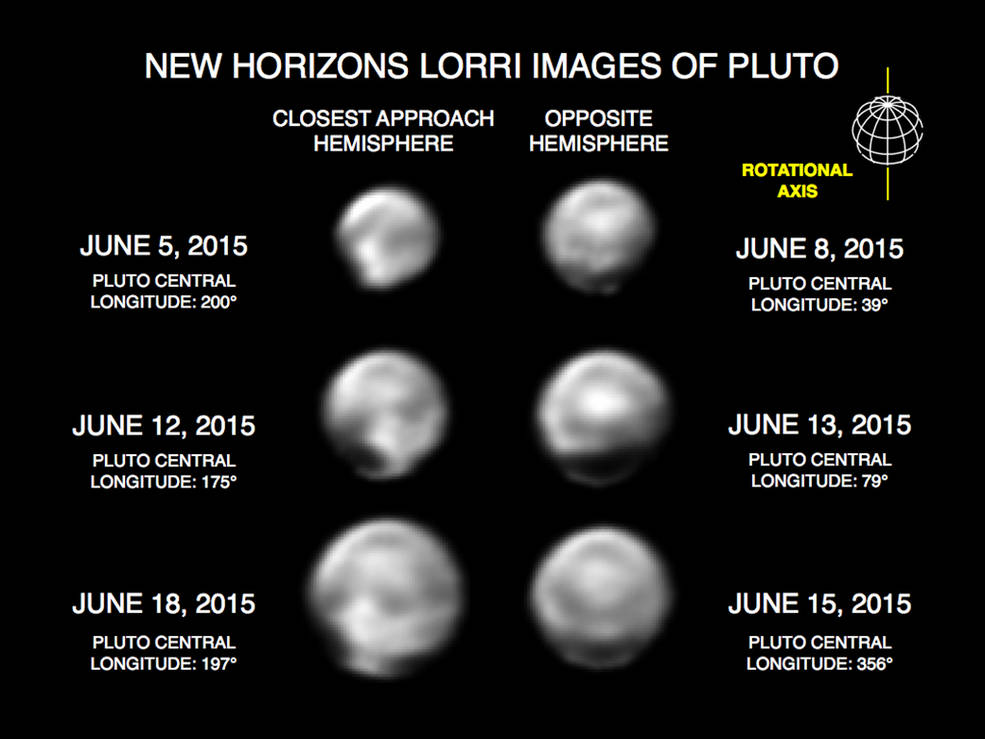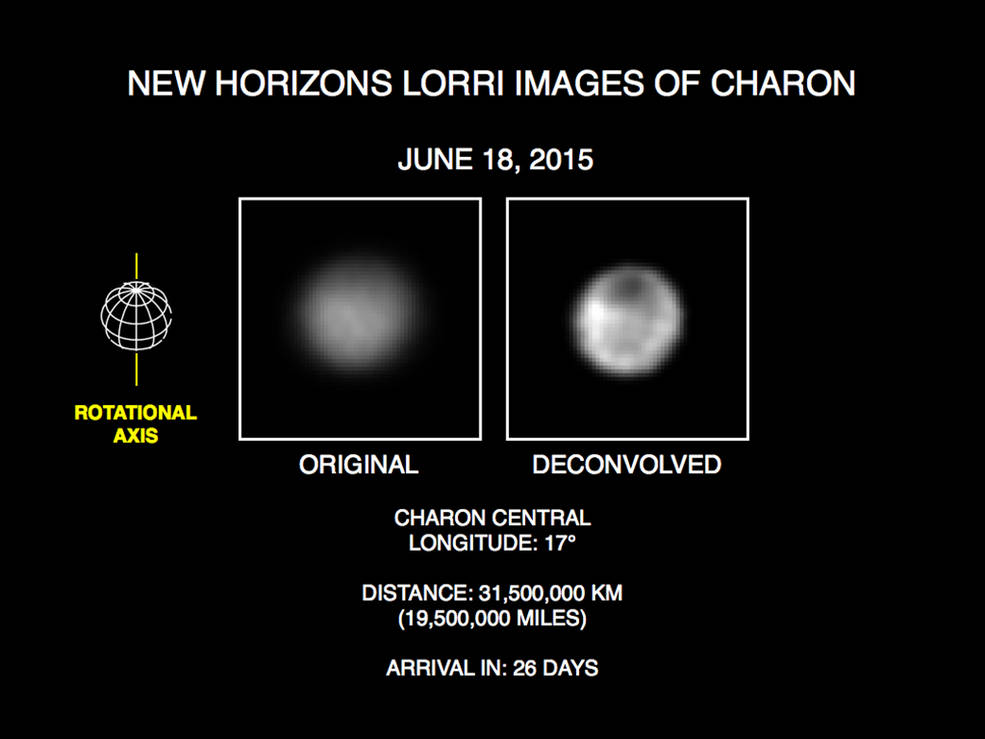New Horizons Unveils New Details On Pluto’s Surface and Spots a ‘Dark Pole’ on Charon
by Sophia Nasr, @Pharaoness
Still three weeks away and 25 million km (16 million miles) from its July 14 flyby of the Pluto system, the New Horizons spacecraft continues to make exciting new discoveries as it nears the dwarf planet. You can view the sequence of images taken in the video below.
In these latest images captured by the Long Range Reconnaissance Imager (LORRI) telescope between May 29-June 19, scientists have found that the hemisphere the spacecraft will fly over on closest approach, has the greatest variety of terrain types seen on the planet so far. The images also revealed that Charon has a "dark pole"; a much darker, "mysterious" region that forms a kind of "anti-polar cap".
"This system is just amazing," said Alan Stern, New Horizons Principal Investigator, from the Southwest Research Institute, Boulder, Colorado. "The science team is just ecstatic with what we see on Pluto’s close approach hemisphere: Every terrain type we see on the planet—including both the brightest and darkest surface areas —are represented there, it’s a wonderland!
"And about Charon—wow—I don’t think anyone expected Charon to reveal a mystery like dark terrains at its pole," he continued. "Who ordered that?"
In the following images, you’ll see images of Pluto taken from June 5 to June 18. Using a technique called deconvolution, which sharpens images and enhances details, the New Horizons team has revealed a surface varying in brightness throughout the dwarf planet. You can also see how the images are getting better as the days progress. Aware of the fact that deconvolution can sometimes introduce false features into images, the New Horizons team will be closely observing imagery as the spacecraft nears the system to ensure the details persist. Also note that Pluto’s non-spherical appearance is a result of the deconvolution technique as well as variation in brightness across Pluto’s surface. Previous data has determined that Pluto is indeed a nearly perfectly spherical object.

"The unambiguous detection of bright and dark terrain units on both Pluto and Charon indicates a wide range of diverse landscapes across the pair," said science team co-investigator and imaging lead Jeff Moore, of NASA Ames Research Center, Mountain View, California. “For example, the bright fringe we see on Pluto may represent frost deposited from an evaporating polar cap, which is now in summer sun.”
In the image below, you can clearly see the darkened pole on Pluto’s largest moon, Charon, thanks to the deconvolution technique. In the original image, the same area looks slightly darkened as well. What is also surprising is how spherical Charon appears. This moon is certainly not like the others orbiting about Pluto, and indeed, is full of surprises, as Alan Stern noted.


A distant 4.7 billion km (2.9 billion miles) from Earth, New Horizons is now just 21 days away from its close approach with the Pluto system on July 14. And as the day approaches, more and more revelations will be made. New Horizons is lifting the veil of mystery around the Pluto system, bit by bit, as we anxiously await our first ever up-close introduction to this special and distant relic of our solar system’s history.
For the original press release, click here.
Last edited on June 25, 2015 4:00pm ET
 Sophia Nasr is an astrophysics student at York University. Actively involved in the astronomical community at York U, she is the President of the Astronomy Club at York University and a member of the team at the York University Observatory. She also is involved in university projects, and holds a position in research on dark matter at York U. Holding scientific outreach dear, Sophia is actively involved in social media outlets such as Facebook, Twitter, and Google Plus, where she shares with the world her passion for the universe and how it works.
Sophia Nasr is an astrophysics student at York University. Actively involved in the astronomical community at York U, she is the President of the Astronomy Club at York University and a member of the team at the York University Observatory. She also is involved in university projects, and holds a position in research on dark matter at York U. Holding scientific outreach dear, Sophia is actively involved in social media outlets such as Facebook, Twitter, and Google Plus, where she shares with the world her passion for the universe and how it works.







